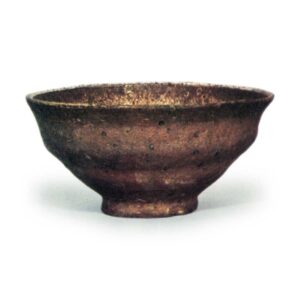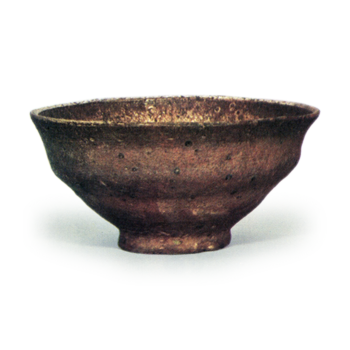
A classification of Japanese teacups in relation to Korean teacups. They are sister to totoya, and since ancient times have often been confused with them. In the “Chawanki Meibutsu Zuishiki” (Dictionary of Tea Utensils and Masterpieces), it is said, “This tea bowl looks almost like a bowl with a persimmon’s calyx overflowing, hence the name, but it is a shallow bowl from the neck, and even now there are very few deep ones, so many people mistake it for an old Toiya persimmon calyx, the clay taste is very different and the workmanship is more refined than Toiya, so there are no new or old examples of this persimmon calyx. In the “Touinu Shinsho” (A New Book of Inu), it is written, “The refined part of the Uoya teacup is called kaki (persimmon) stem, and when you look at the teacup, there is nothing that looks like a persimmon’s stem. In other words, the name “kaki-no-tame” is based on the shape of the stem, but the coloring of the stem also makes this inscription appropriate. It is a tea bowl with a rich tea flavor, although it is somewhat lacking in dignity. The most famous tea bowls of this type are a kaki no tame (persimmon calyx) owned by Rikyu and stored in the collection of Hosokawa, a kaki no tame (persimmon calyx) owned by Matsudaira Fumai and stored in the collection of the Hotta family, and others with the names of Tatsuta, Seo, Otsu, Ryukawa, and Kyogoku. (Taisho Meikikan, “Tea Ceremony Meimono Kou”)



